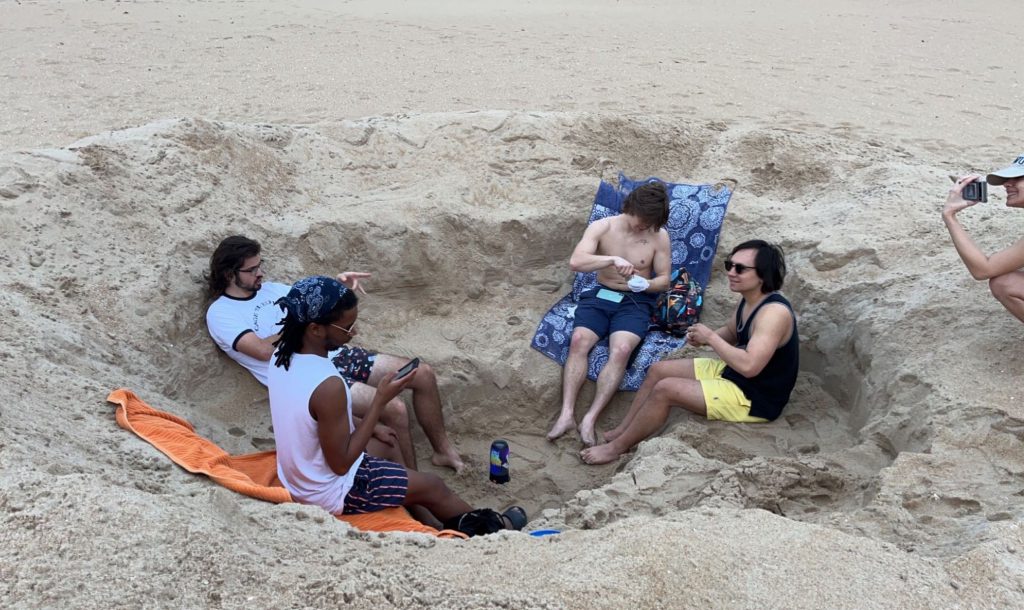Exterior view of Hunter House Victorian Museum, located on W. Freemason Street, in Norfolk. Hanna Kirby|Courtesy
Nestled within the Waterside District’s array of modern mammoth skyscrapers, restaurants and shipyards, lies one family’s house—now a home to living history. Hunter House Victorian Museum boasts a vastly different experience from the Chrysler Museum or even the Virginia Museum of Contemporary Art (MOCA).
Hanna Kirby, the director of Operations and Communications at Hunter House, described the residence as having a “lack of boundaries between you and the artifacts.” This level of personability allows visitors to engage with the humanity of everyday life left by the Hunter family from the previous century. Nothing is on display—you are part of the exhibit.
Visiting Hunter House is more than just historical education. From the moment you turn into the neighborhood, you step backwards through time and the sounds of bustling Norfolk fade away. Cobblestone streets pave the historic boulevard and guide you to the welcoming Brownstone facade of the late Hunter family’s home. The grandiose arched doors beckon passersby into the wood-paneled foyer where period furniture, wallpaper and architectural characteristics compose the backdrop of a Victorian family’s lifestyle.
The Hunters were a well-traveled and well-to-do family of five—James and Lizzie, with their three children: James Jr., Harriet and Eloise. Their lush home features status symbols from the time, such as oil paintings, relics from travels and expensive children’s toys. Their wealth is evident. However, James Hunter Sr. was a self-made man, whose previous investments still fund the museum today.
Atypical for the time, all three children never married. Instead, they stayed active within their community sphere via political movements such as the suffragette movement, or serving others through James Jr.’s career as a cardiologist and a medic during World War I. Despite their family’s legacy, the end of their lineage meant that when the youngest, Eloise, passed, she donated the family’s home to become what it is today, “a museum of decorative arts and furnishings from the Victorian era,” according to the website.
As part of the Hunter House team for two years, when asked about her favorite part of the home, Director Kirby mused that her “favorite part of the house [was] the sense of discovery,” for the staff and audience.
Even though the museum has been open to the public for years, docents and historians are still uncovering pictures, postcards and details from the Hunter family and local donors. These miniature revelations further reveal the personalities and dispositions of James, Harriet, Eloise and other Victorian-era individuals. For viewers, this personable experience helps them achieve a deeper appreciation and connection to history.
The museum’s team has done a phenomenal job “preserving local heritage, [inspiring] an appreciation for the broader historical narrative, and reach[ing] diverse communities through inclusive, accessible education, and innovative programming,” in accordance with their mission statement.
Located at 240 W. Freemason St., Norfolk, the museum is a mere eighteen minute drive from Virginia Wesleyan’s Campus. Tours, self-guided and scheduled, are available from April to December, Wednesday through Saturday, from 10:00 a.m. to 4:00 p.m.. As for admission, for the rest of 2022, entrance fees have been waived. Visit their website to learn more about events and programs, or to contact a team member to plan your visit.
By Sasha Saxon
ansaxon@vwu.edu

